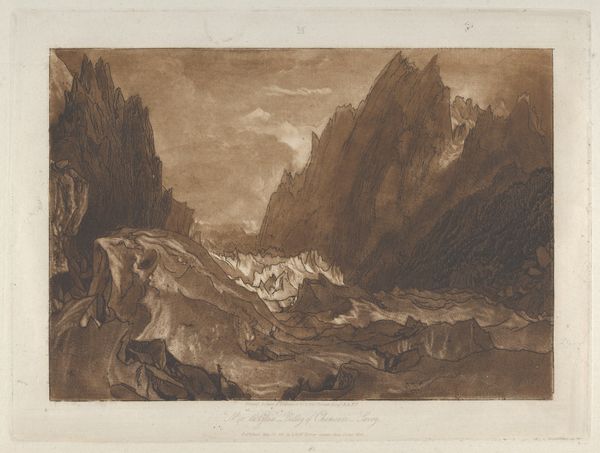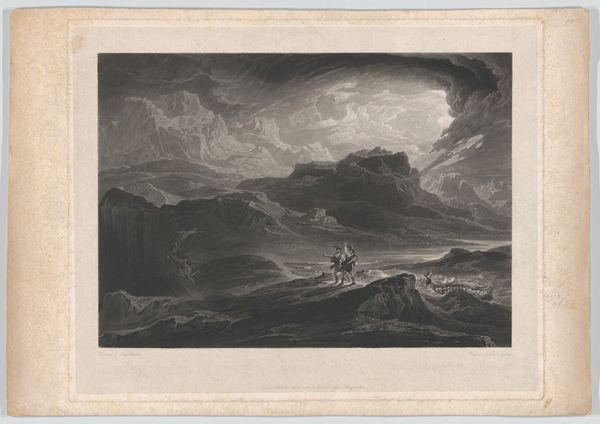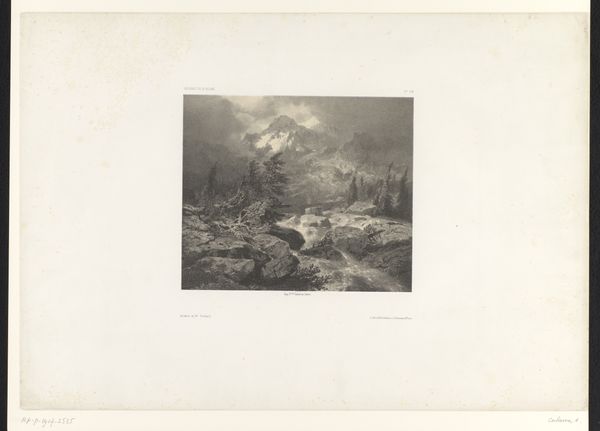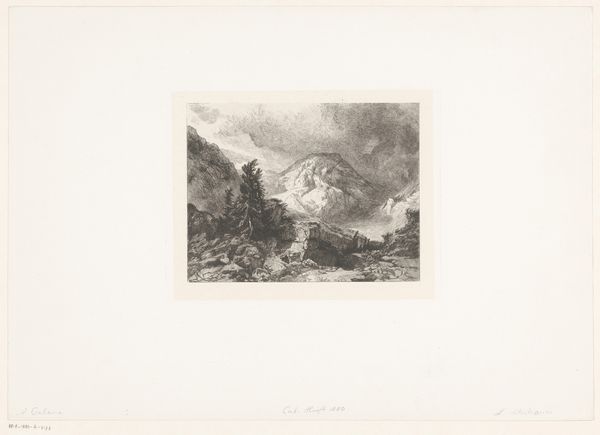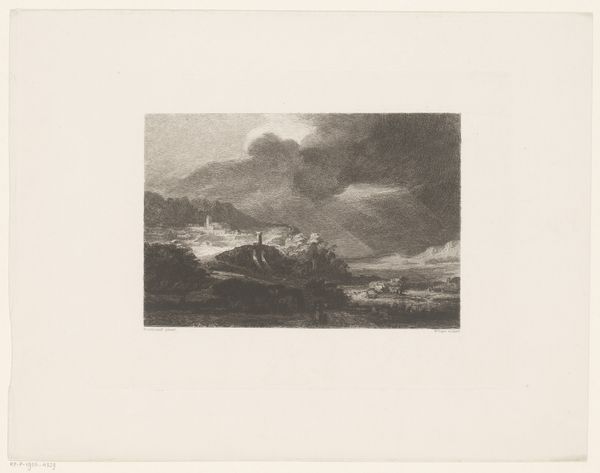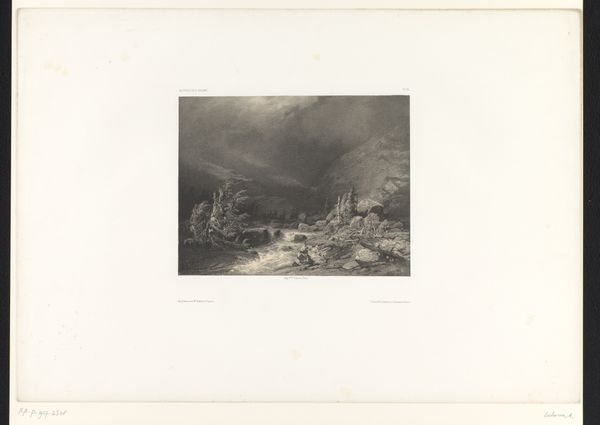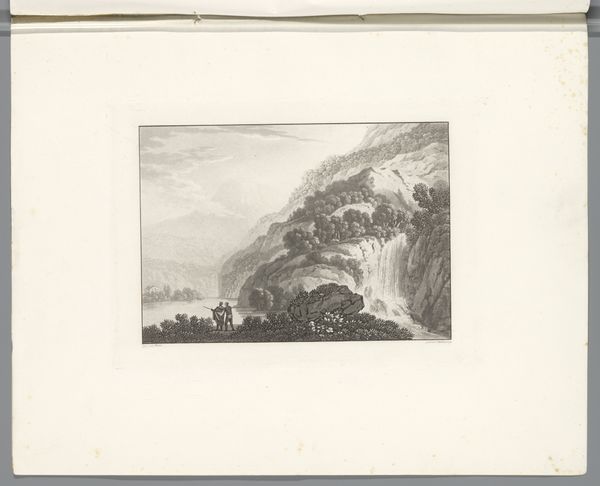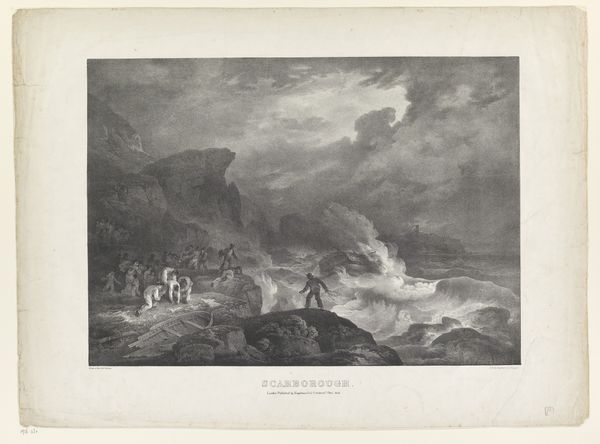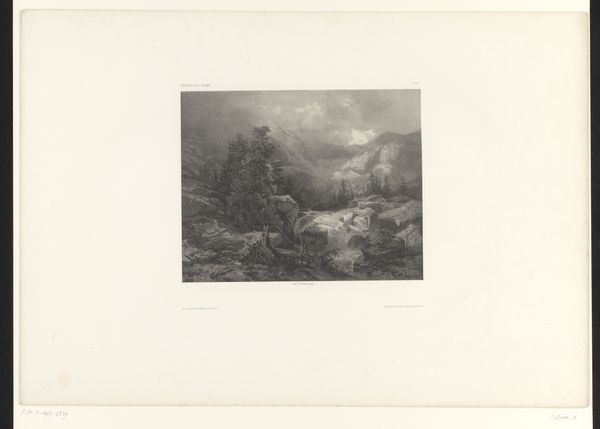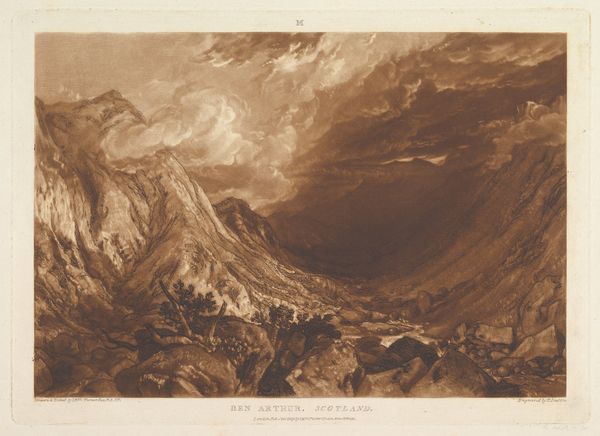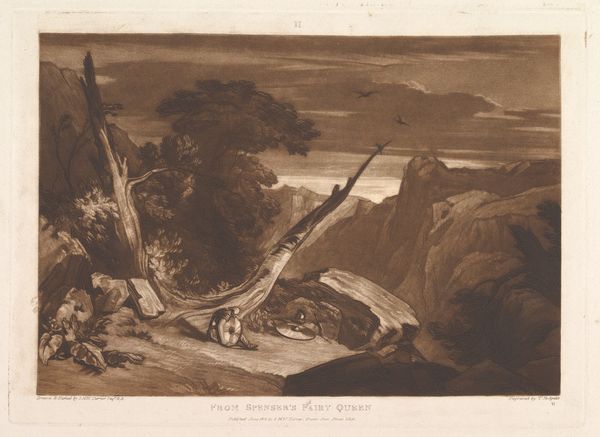
Dimensions: height 224 mm, width 297 mm
Copyright: Rijks Museum: Open Domain
Curator: Before us, we have Joseph Mallord William Turner's "Stormachtig landschap met vloed en drenkelingen," dating sometime between 1828 and 1898. It’s a print, utilizing etching as the medium. It hits you right in the gut, doesn't it? Editor: Utterly bleak! It’s that classic Turner gray-brown, but intensified. I feel like I’m drowning just looking at it. It perfectly captures the overwhelming powerlessness in the face of nature’s fury. The darkness really does creep into your bones. Curator: It does. And I find myself connecting to its invocation of the sublime, that potent blend of terror and awe, so prevalent in Romanticism. The image is rife with symbolic meaning. The swirling storm evokes chaos, but is it a societal ill, or is Turner getting after nature herself? Editor: I see both present in this. Those struggling figures—are they a representation of humanity battling overwhelming forces, or is it about individual dramas playing out against an uncaring backdrop? The wave feels like it could swallow whole communities and ideas and spit them into the earth where they disappear forever. I'm curious about the lone swan – that has to be symbolic in this context. Curator: Ah, yes! Swans often signify purity and grace. Here, though, it almost feels ironic, adrift in a scene of utter devastation. It suggests a kind of fallen beauty. Perhaps Turner suggests the precariousness of virtue when all hell breaks loose. It serves as a potent counterpoint to the chaos. Editor: Precisely! That precariousness rings so true. It's an uncomfortable mirror, holding our vanities and pretenses up against raw, elemental power. Makes one question any kind of control over nature, doesn't it? You can try to create something graceful in the heart of turmoil, but the storm may eventually drown the sound of creation. Curator: Absolutely. A rather sobering meditation for us, perhaps, on what truly lasts, when we stand so small against it all. The etching feels so timeless despite it clearly having happened somewhere with real victims, or is this from the Romantic’s over-active imaginations? Editor: And that makes this work continually relevant, even as our definitions of the sublime have certainly shifted. It is beautiful in its tragic vision, the darkness, the overwhelming sea…the storm… it truly stays with you.
Comments
No comments
Be the first to comment and join the conversation on the ultimate creative platform.
